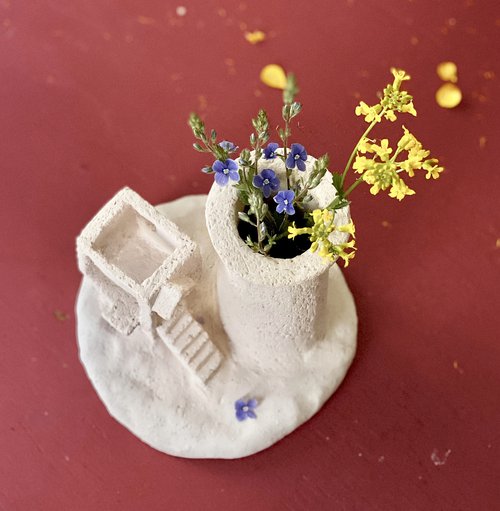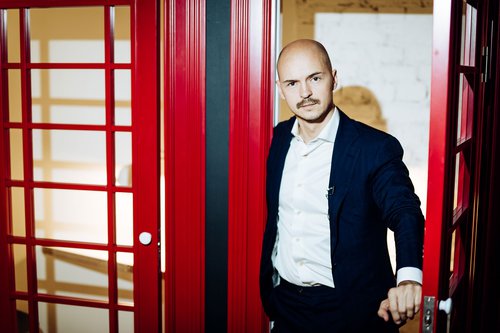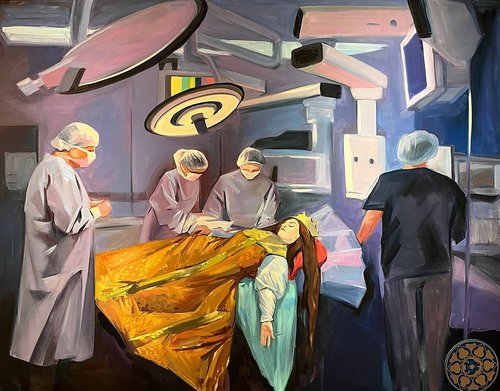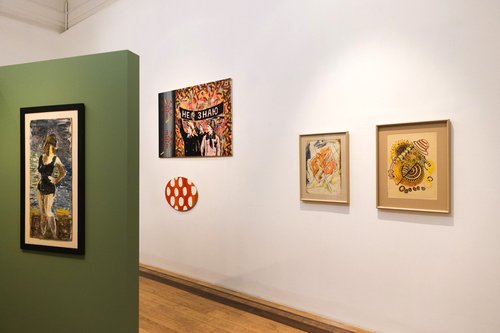Counting to Five: Danelia’s Multi-Layered Art
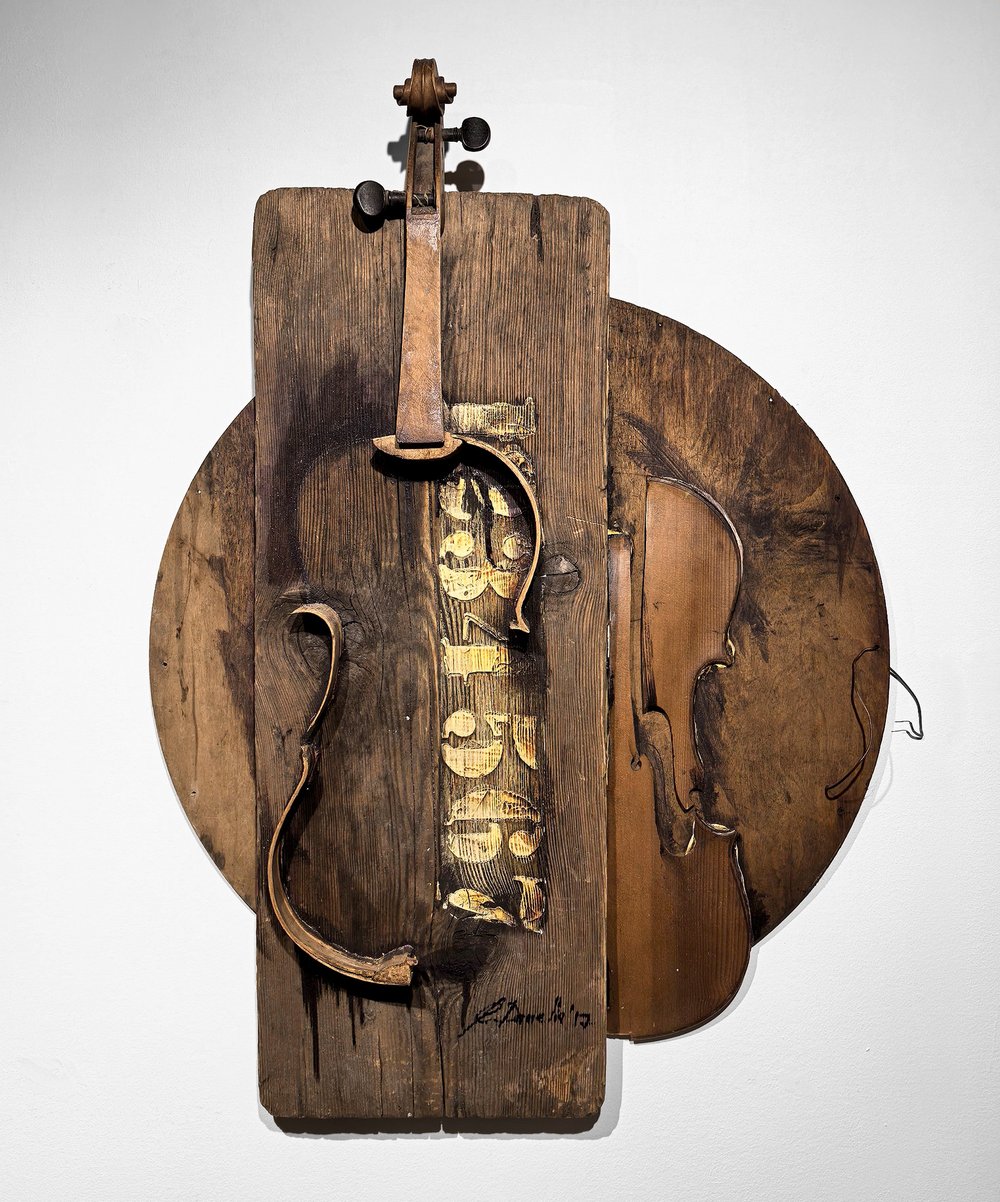
Kirill Danelia. Untitled, 2017. Courtesy of All-Russian Museum for Decorative Art
Artist and gallerist Kirill Danelia has unveiled a solo exhibition called Five at the Museum of Decorative Arts in Moscow. It showcases both his artistic endeavours and his passion for Oriental antiques.
Artists and art dealers are two distinct tribes in the jungle of the contemporary cultural economy - entangled in a complex and often controversial codependent relationship, sometimes at war, sometimes in alliance, and always complaining about each other. Kirill Danelia (b. 1968) occupies a unique position in the Moscow art scene because he belongs to both tribes. Danelia was trained as a theatre artist at the Moscow Art Theatre School. In the late 1980s, when Soviet unofficial art was in vogue in the West, he moved to New York one of the capitals of the international art world. There he became interested in Asian antiques, which were sold in abundance in local galleries. Upon his return to Moscow in the early 2000s, he opened the Fusion Culture Gallery, dealing in everything from ancient Egyptian artefacts to Chinese Tang Dynasty sculptures and Japanese shunga (erotic prints). Over the past two years he has broadened his focus to include non-conformist and contemporary art and if you look hard enough, you can also spot his own artworks hanging unobtrusively in the corners. Somehow, when it comes to self-promotion, the dealer and collector in him is bolder than the artist. Danelia has held many exhibitions of his diverse collection of ancient artefacts in museums across Russia. But his solo exhibitions in the last few years are few and far between.
Danelia's preferred media are painting and assemblage. His theatre background is particularly evident in the latter - he chooses parts carefully, as if they were props for a performance, and assigns a role to each one. The current exhibition at the All-Russian Museum of Decorative Arts is loosely tied together by the number five, which is present in every work. The show commemorates the fifth anniversary of the Shunga exhibition organized by Danelia at the same museum. Since then, the political climate has changed so dramatically that 'an exhibition of erotic art in a state museum' sounds like a contradiction in terms. In the current show, a few Polaroid nudes have been incorporated into assemblages - a nostalgic nod to earlier freedoms. At the opening of the exhibition, the artist explained to me that the number five has a symbolic meaning for him, pointing out that in Greco-Roman mythology it was a symbol of sacred marriage. Although this number is present throughout Danelia says the exhibition is less a conceptual project than a mini retrospective, outlining the most important series and motifs in his art. A few ceramic sculptures from his collection of Oriental antiquities stand proudly in the centre of the room, protected by glass. On the walls are abstract canvases, minimal in colour but rich in texture, as well as many assemblages and depictions of New York fire hydrants, a recurring image in his painting. There is a series of assemblages of deconstructed violins, an homage to Picasso's famous work. Here, the forces of order and chaos collide: an instrument that appears to the viewer as the epitome of harmony is destroyed, but from the newfound combination of its broken body with other everyday objects, a new order and harmony is born.
The main protagonist in Danelia's art is time itself. For him it is not an abstract philosophical concept, but a physical force of nature. He works with layers of time and its material substance. He loves driving around the Russian countryside in his jeep, looking for abandoned, dilapidated churches in remote corners of deserted villages with no inhabitants and no paved roads. These ruins might seem depressing to many, but Danelia looks at them with the eye of an artist, fascinated by the richness of texture, the visible work of time on surfaces, the decadent beauty of decay. He nostalgically recalls the rough, unglamorous side of New York in the 1990s. “I don't like shiny skyscraper New York; I love it for its ‘garbage-ness’. When I lived there, I was fascinated by the ruins, the gradual change of civilizations, the adaptation of old factories for housing,” he once told me. New York fire hydrants fascinated him because of their beautiful shapes and the controversial feelings they evoke: a nuisance to any car owner because it is illegal to park near them, yet an essential part of the city's infrastructure and a welcome relief from the summer heat when they turn into fountains on sweltering August days.
For him, every man-made thing has a touch of humanity, it tells a story and often a spiritual one. Beneath an ugly surface there could be a miracle. The feeding of five thousand with five loaves and three fishes – an episode from the Gospels – is told in a crude and simple language: five aluminum soup bowls, once a staple in Soviet and Russian institutions from hospitals to prisons, are glued to a canvas alongside realistic-looking fishes that turn out to be intricately carved wooden folk sculptures from Japan. For the artist, everything made by human hands, from a humble bowl to an elaborate figurine, has a story, and when these stories overlap and intertwine, a new work of art is born. The non-obvious narrative, the ambiguity, the endless field of possible interpretations is what makes it art, rather than a visual puzzle of flea market finds. A nineteenth-century wooden dragon from Japan finds its home on a canvas, next to Polaroid snapshots of naked young women. Is this a frivolous celebration of the Chinese New Year, or a modern take on an ancient legend in which virgins were sacrificed to a fire-breathing monster? You never know, and you can keep on guessing. Danelia's art remains as inscrutable as a smile on the face of a Tang princess. After all, he did not bring her into this room for nothing.
Kirill Danelia. Five. Assemblages, Painting, Collection
All-Russian Museum for Decorative Art
Moscow, Russia
28 March – 18 May 2025











